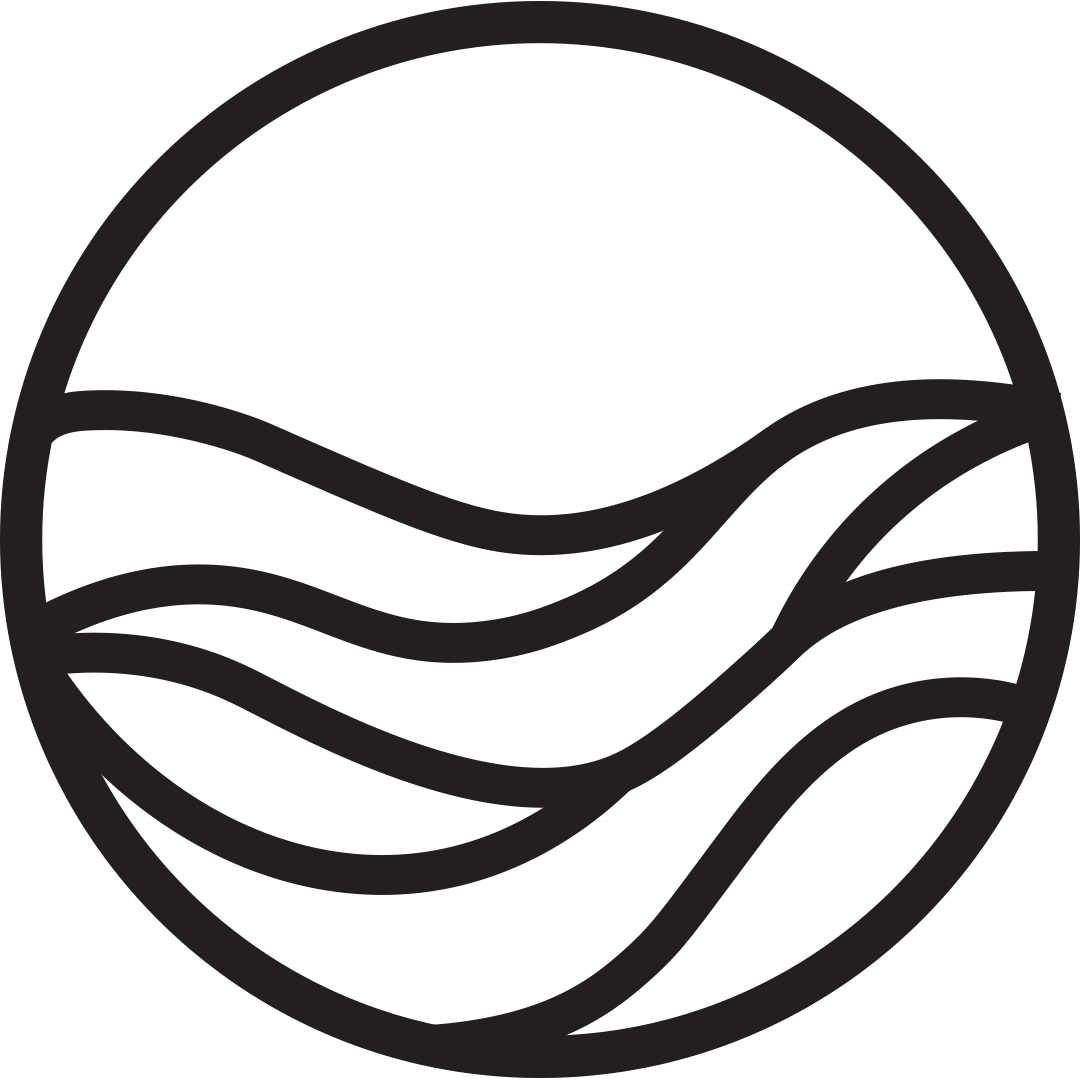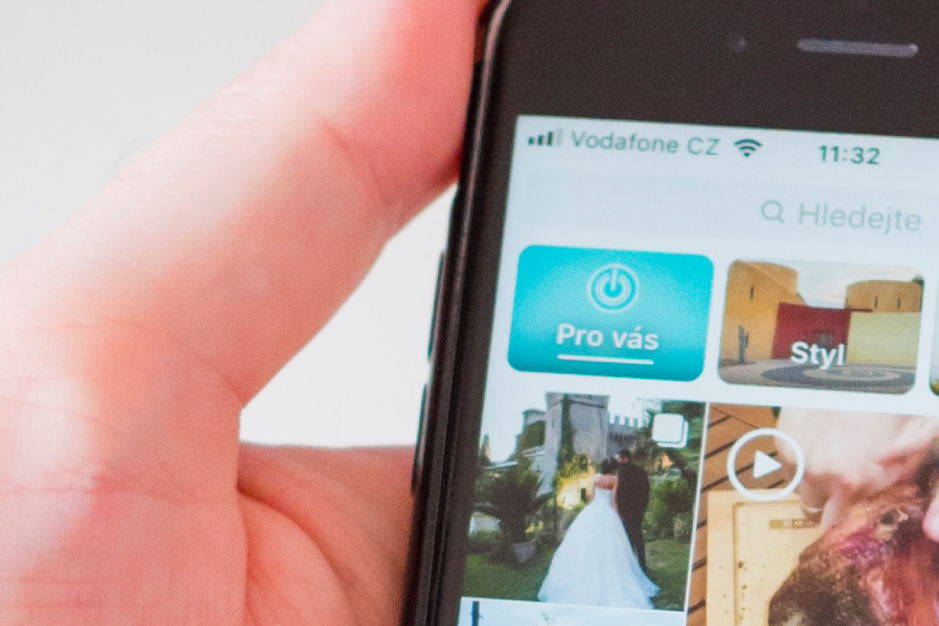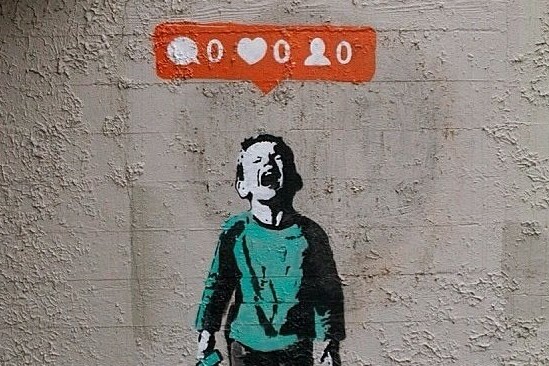In the world of content marketing, there’s a rule of thumb for content creators: listen to what your audience needs before communicating with them.
With the rise of sophisticated softwares on the internet, marketers have the privilege of gaining real-time sentiments and this is an opportunity for any brand that wants to have stronger visibility amidst their competitors.
Social Listening Helps You Gain Competitive Advantage.
With lots of small to medium businesses rising up along with mega brands, it’s crowded out there. Do you know where your brand stands within the market? It starts with listening.
What is social listening? Social listening is about opinion mining. Through social listening tools, we are able to track conversations across various channels to provide insights. These insights are typically useful in determining how a brand can build better relationships with their audience or what they can offer to create meaning engagement.
While social listening tools can gather data, the data is useless without analysis. Customers are actively sharing their pain points and expressing what they want from brands. A marketer’s job is essentially to unpack an array of information that is shared every mili-second in the world wide web. The goal is to dissect a person’s thought and feelings, analyzing numbers to consider the mood behind the data and eventually, turning data into actionable insights. Through this data-driven approach, brands can respond strategically. This is your chance to turn insights into campaigns that resonates with real people.
The value of running a competitor analysis goes a long way, especially when you take into consideration the audience sentiments between competing brands. Let’s take a look at a case study done internally by our team members to make a competitor analysis between two multi-service tech platforms in Indonesia called Grab and Gojek through social listening.
Gojek started in Indonesia in 2015 and has presence in 4 other Southeast Asian countries, while Grab started in Singapore in 2012 and has presence in 8 Southeast Asian countries and Japan.
Both brands are on-demand multi-service tech platforms providing access to a wide range of services including transport, payment, food, delivery, logistics, and many more.
Competitor Analysis Result between Gojek VS. Grab for a periodic time.
In the duration of 3 months (Aug 2020 – Oct 2020) we discovered that Gojek has more brand mentions by 67,4% in comparison to Grab. This shows that in Indonesia, Gojek has a bigger brand voice in comparison to Grab, showcasing that Gojek has more authority than Grab within the industry of transport, courier, food delivery and payment services. Within the same month, Gojek had run a far more successful brand activation campaign that created more conversations within the same pool of audience.
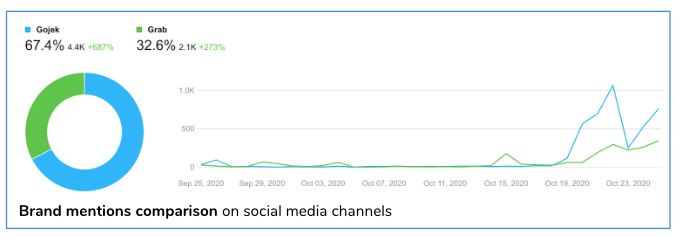
Once we discovered the contrast in brand mentions, we dug deeper per brand’s channel to observe their latest activity to track the determining factor that drove the increase of brand mentions for Gojek.
Based on their channel postings, we can see that the peak data of Gojek’s audience reach on Oct 22, 2020 was triggered by a National content creator competition called #Gojek10tahun. With a prize giveaway of 200milion rupiah, Gojek has launched a national and regional contest in conjunction with their 10 years anniversary. The call to action of the campaign was to encourage Gojek users to share their experiences on their Twitter or Instagram channels. The effectiveness of the campaign is proven in the spike of +687% brand mentions.
BRAND MENTIONS HAD INCREASED, BUT IT WAS FUELED BY NEGATIVE SENTIMENTS.
It is worth noting that the contest campaign by Gojek was a shoot in the foot. The National contest #KarenaGojek encourage users to share their experiences based on how Gojek as a service had helped improve the life of society in a positive way. The second regional theme, #Goj3k has encouraged users to share their experiences based on how Gojek is able to offer social security during the Covid-19 pandemic in terms of health, cleanliness and peace.
While the strategy may have succeeded in creating noise and sparking conversations within the community, the brand did not take into consideration the fact that they are basically inviting honest reviews. This allowed the users to have absolute creative freedom in expressing (Which is powerful!), but it also meant that the brand had no control over what would be shared in the public, digital space. The audience had responded more negatively than positively, in terms of how they felt about the brand’s service offerings.
While Gojek as a brand achieved higher brand mentions, they were basically receiving more negative sentiments in comparison to Grab.




THE PROCESS OF OPINION MINING IS AN EMOTIONAL INDICATOR TO HOW YOUR AUDIENCE ARE FEELING ABOUT YOUR BRAND OFFERINGS.
Between both competitors who appeal to similar target audiences within the same country, Gojek’s strategy was geared towards growth of app usage, above brand awareness and community engagement.
Grab had probably realized that their competitor was ahead of the game, which meant that they needed to act fast before their competitor claimed authority over the entire market.
So by late October, we can see that their comeback strategy was impactful. Grab had initiated #TerusUsaha, a collaborative campaign with an influential local media platform in Indonesia known as Kumparan. The online business festival aims to bring together business people to share knowledge, so that their businesses can survive and thrive amid the COVID-19 pandemic. The event was supported by President Joko Widodo, as well as the Minister of Tourism and Creative Economy Wishnutama, Minister of BUMN Erick Thohir, and Minister of Cooperatives and Small and Medium Enterprises (UKM) Teten Masduki. Through that campaign, Grab’s brand mention increase was driven by the collaboration event held with Kumparan on Oct 27. This led to +273% increase of brand mentions during the month of October 2020.
STRONG VISIBILITY CAN BE BOTH GOOD OR BAD.
Despite having a lower brand presence in comparison to Gojek, Grab has higher positive sentiments. It seems like Grab has more knowledge about their audience needs and was able to engage with them in a more meaningful way, so much so that Grab was able to achieve 14.9% in comparison to Gojek, at 10.5%. After tracking their digital activities, we observed that Grab has launched a series of promotions to reward users. This proved to be effective especially during a crisis, where people are more conscious about spending and want better savings.
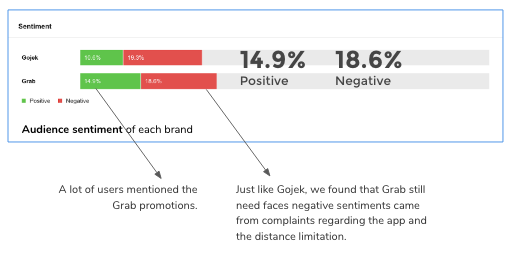
LISTENING IS ABOUT UNDERSTANDING HOW TO RESPOND EFFECTIVELY.
From our research, we conclude that despite having similar offerings, both brands use different communication styles to differentiate themselves and build loyalty through brand activation campaigns that are focused on customer experience.
Both Gojek and Grab are proactively finding different ways to engage with their audience. It’s one thing to know what your audience is feeling and it’s another to respond with a campaign that not only meets their demands but takes into consideration the current challenges and pain points that the world is going through. Seeing as to how both brands have activated a campaign that was based on rewards and promotions, it is worth noting that Grab’s campaign strategy had more depth because it had included business development funds worth tens of millions of rupiah as a way of providing a solution to the economy in Indonesia. This was received positively during the pandemic in comparison to a campaign like Gojek, that aims to reward with cash value but had no higher purpose of addressing the current pain points of the Indonesian community.
_________________________
Want to get more insights from our social listening case study? We have a lot more to share from our findings. Shoot us an email at contact@wavemakers.co to get in touch!
Related Posts
09.01.2020
Social Listening, Missing the Point? | Podcast S02E03
The best kinds of relationships are ones where you listen to each other. On…
09.12.2019
How Facebook Hotel Ad’s Work
Travelers spend 5x more time on Facebook than on travel-related apps, sites,…
